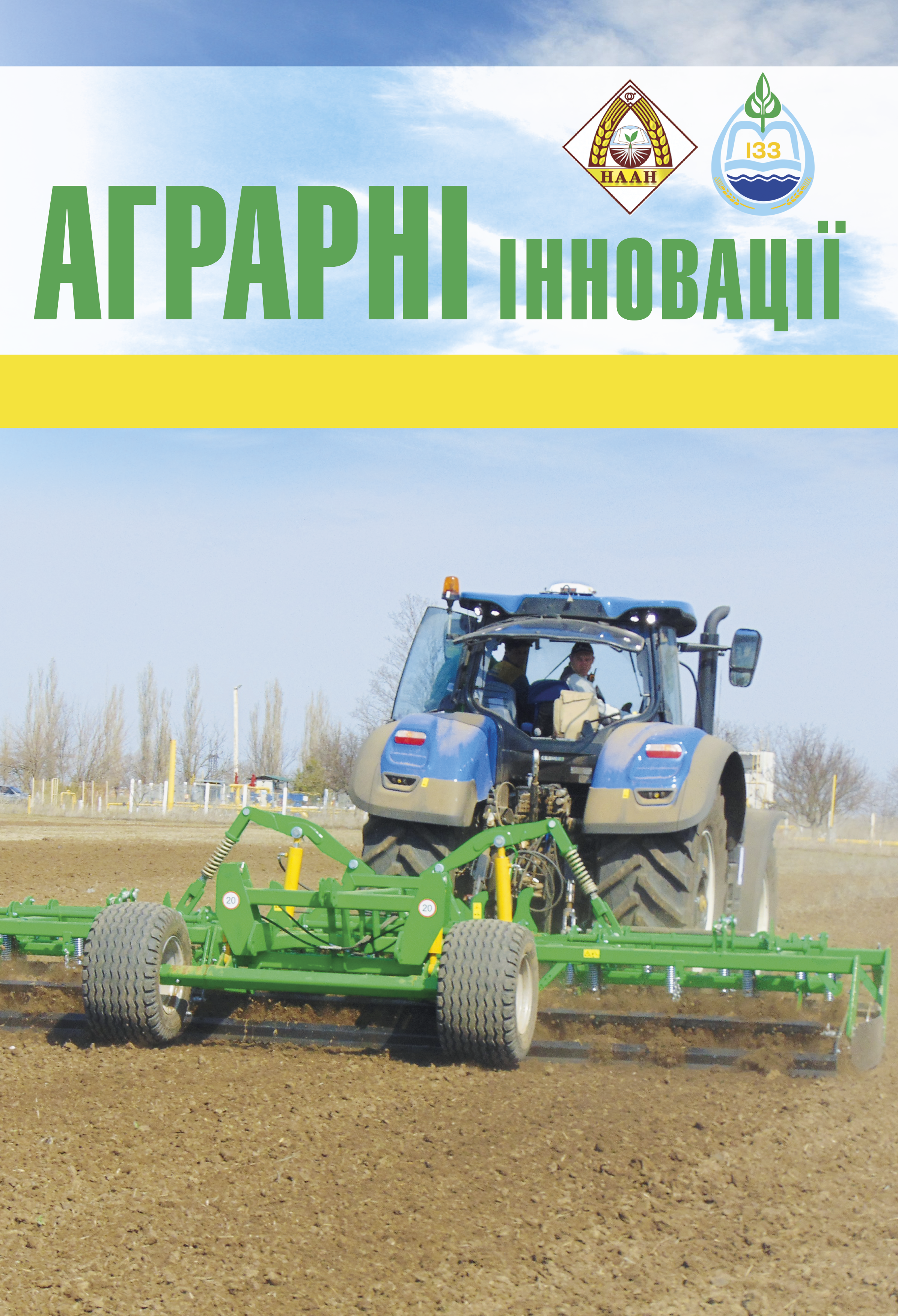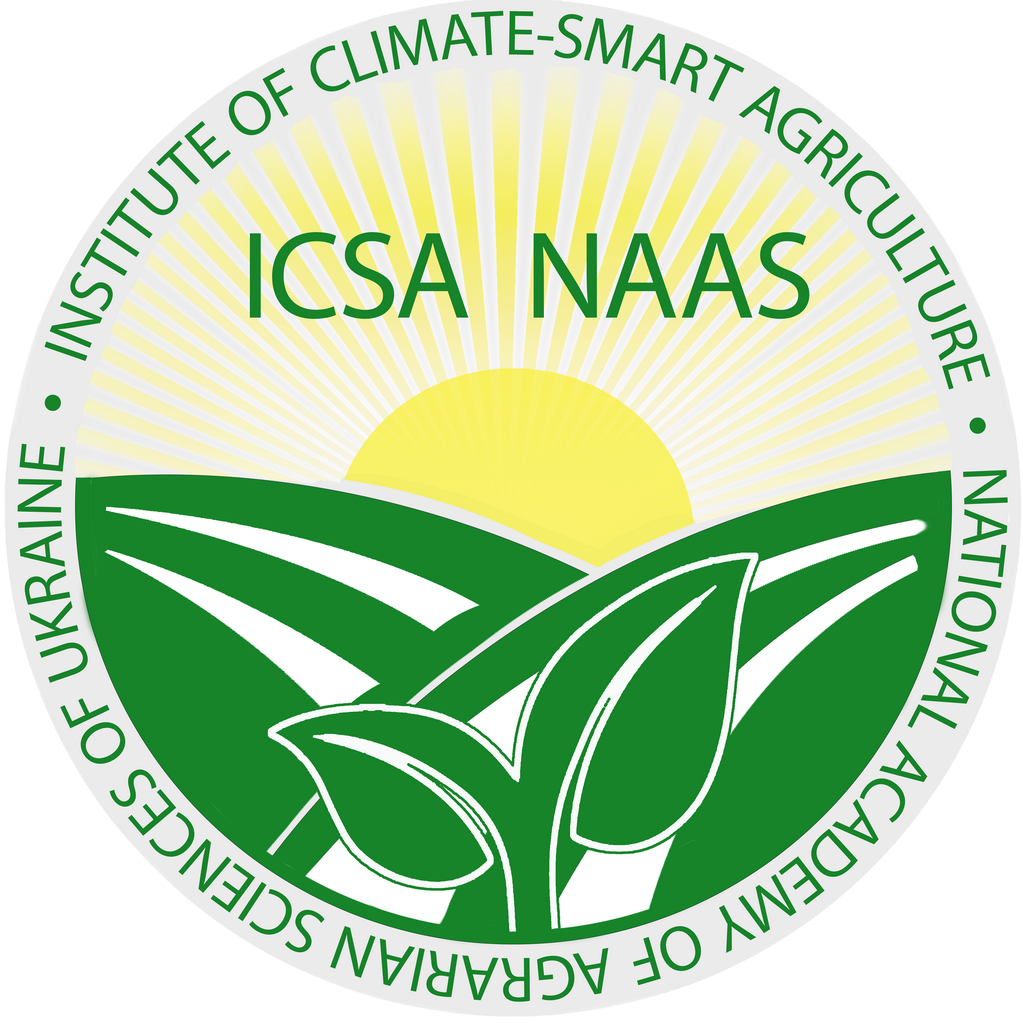Variability in winter wheat under the formative action of Nonidet P-40
Abstract
Nonidet P-40 belongs to the class of epimutagens, i.e.chemicals that can cause a large number of hereditarychanges without causing significant damage to the DNA ofa living organism, as they affect the protein part of the chromosome.Purpose. To study the frequencies and spectraof epigenetic variability in winter wheat varieties, to identifykey moments of the occurrence of hereditary changesin traits and depending on the source material. Methods:Seeds of 4 varieties of winter wheat Perspektyva Odeska,Sonata Poltavska, Shpalivka, MIP Lada were treated with asolution of the chemical epimutagen Nonidet P-40 (4-nonylphenyl-polyethylene glycol, here and hereinafter referred toas NP-40) in concentrations of 0.01%, 0.05%, 0.1%, 0.5%.In generations M2–M3, mutant families were selected byvisual assessment, analysis of phenophases, structuralanalysis, and analysis of grain yield. Results. 10,000 familiesin the second and third generations were studied. Usualconcentrations were used, which are typical for ecogeneticpractice. At the same time, even a higher concentration ofNP-40 0.5% did not lead to a significant decrease in viability.With statistical significance, the total mutation frequencywas affected by the indicators of increasing concentration,but not the initial form, in all cases the variants for frequency differ from each other and from the control,for the level of variability except for NP-40 0.1% and 0.5%for the Shpalivka and MIP Lada varieties. In the spectrum,a total of 30 changed traits were obtained for 6 groups ofvariability, it is possible to reliably predict for this mutagenon this material a high number (in comparison) of shortstemmutants, forms with a large ear. Also, there are goodprospects for changes in early maturity, the emergence ofproductive forms. Other positive variants are unlikely. Forthe process of hereditary variability, discriminant analysisestablished the modelability of individual parameters bygroups. It was significant in terms of frequency, level ofvariability, mutations in the first, fourth, and sixth groups.Discriminant analysis showed no difference in the effect ofNP-40 0.05 and 0.1%. Findings. NP-40 as an ecogeneticagent has a rather weak effect due to the frequency andspectrum of induced forms, but although low-frequency, thechanges are regular and are in some ways characteristic ofsome varieties (Sonata Poltavska, Perspektyva Odeska).There is a high probability of obtaining valuable forms withlarge grain ears and the regular occurrence of valuable early-ripening, low-stem forms, but the situation is worsenedby the regular occurrence of late-ripening and high-stemchanges. For the source material used, more promisingoptions for the action of NP-40 0.1 – 0.5 %, there is novarietal specificity.
References
2. Anter A. Induced Mutations in Wheat (Triticum aestivum L.) and Improved Grain Yield by Modifying Spike Length. Asian Journal of Plant Sciences. 2021. 20: P. 313-323. Retrieved January 14, 2023, from doi: 10.3923/ajps.2021.313.323
3. Chaudhary J., Deshmukh R., Sonah H. Mutagenesis Approaches and Their Role in Crop Improvement. Plants. 2019. 8, 467.
4. Mangi N., Baloch A. W., Khaskheli N. K., Ali M., Afzal W. Multivariate Analysis for Evaluation of Mutant Bread Wheat Lines Using Metric Traits. Integrative Plant Sciences. 2021. 1(1). P.29–34.
5. Nazarenko M., Izhboldin O. Izhboldina O. Study of variability of winter wheat varieties and lines in terms of winter hardness and drought resistance. AgroLife Scientific Journal. 2022. 11(2). P.116–123.
6. Horshchar, V., Nazarenko, M. Peculiarities of the sodium azide action as a factor of variability on winter wheat. Agriculture and Forestry. 2024. 70(2).P. 61–76.
7. Shabani M., Alemzadeh A., Nakhoda B., Razi1 H., Houshmandpanah Z., ·Hildebrand D. Optimized gamma radiation produces physiological and morphological changes that improve seed yield in wheat. Physiology Molecular Biology Plants. 2022. 28(8). 1571–1586.
8. Spencer-Lopes M.M., Forster B.P., Jankuloski L. Manual on mutation breeding. Third edition. Food and Agriculture Organization of the United Nations, Rome. 2018. Р. 672.
9. Udage A. Introduction to plant mutation breeding: different approaches and mutagenic agents. Journal of Agricultural Sciences – Sri Lanka. 2021. 16. 466.
10. Yali W., Mitiku T. Mutation Breeding and Its Importance in Modern Plant Breeding. Journal of Plant Sciences. 2022. 10(2). 64-70.






